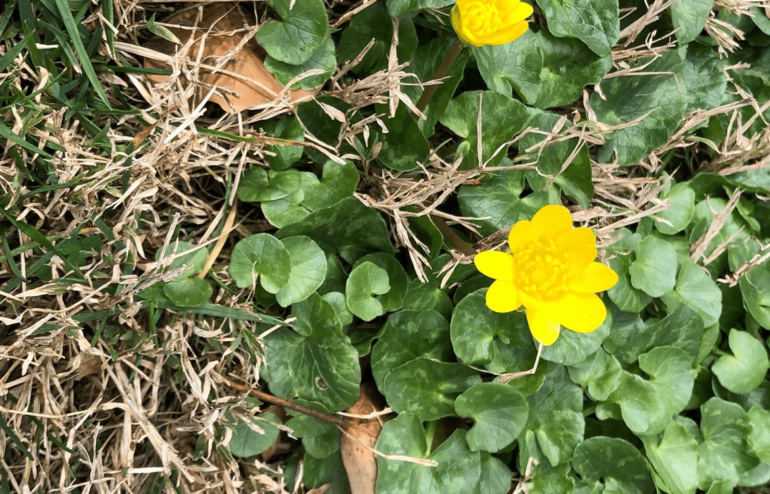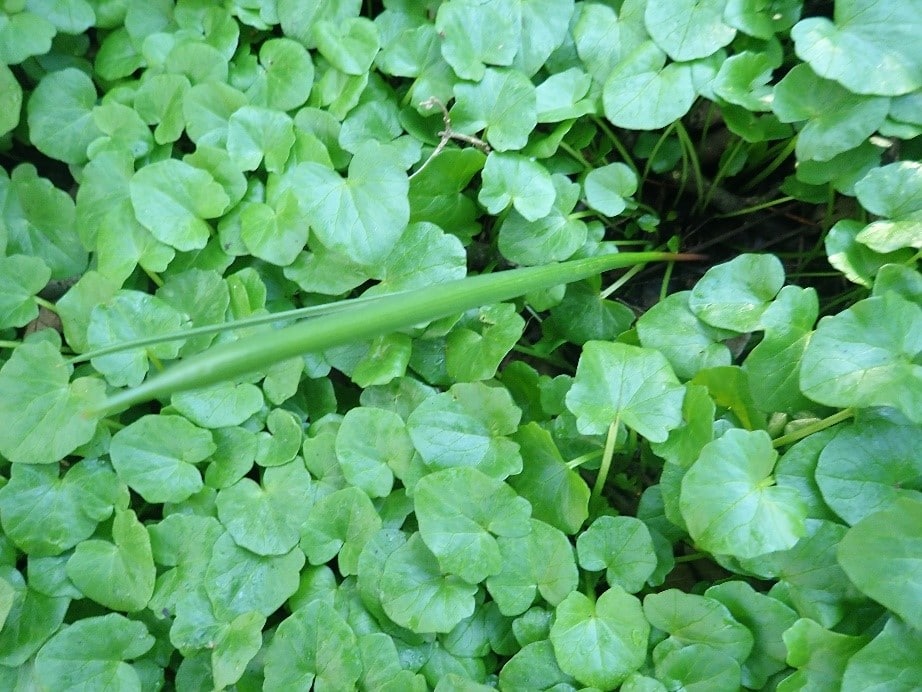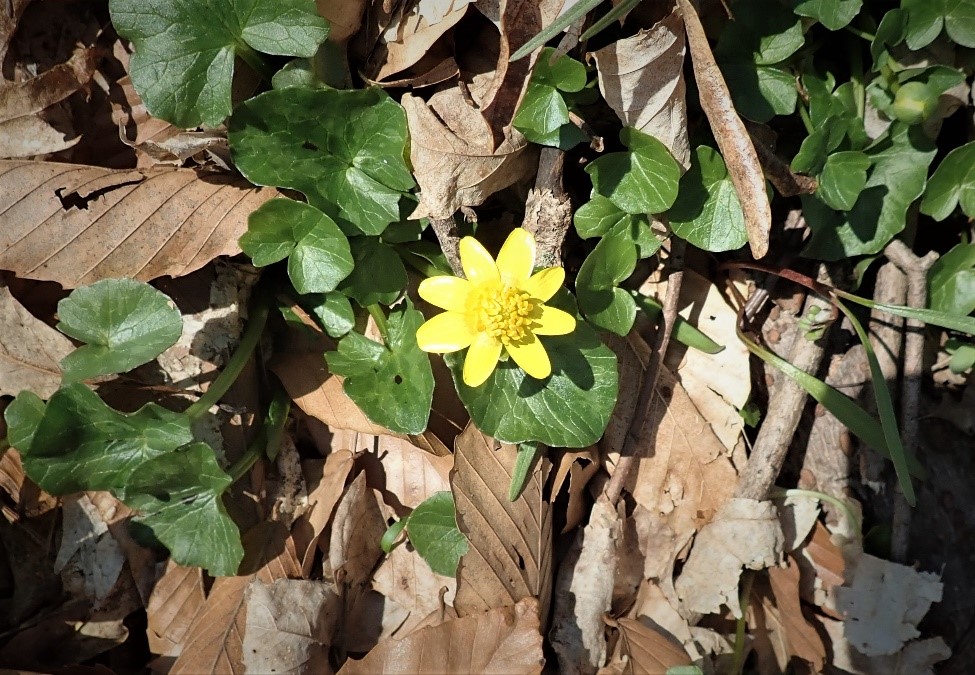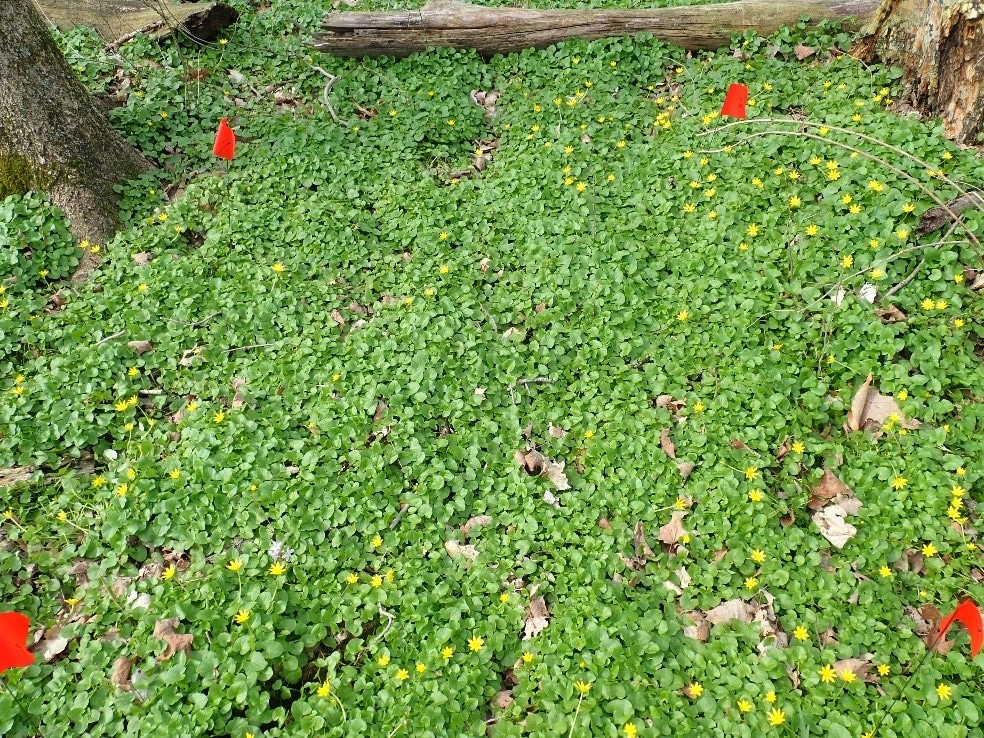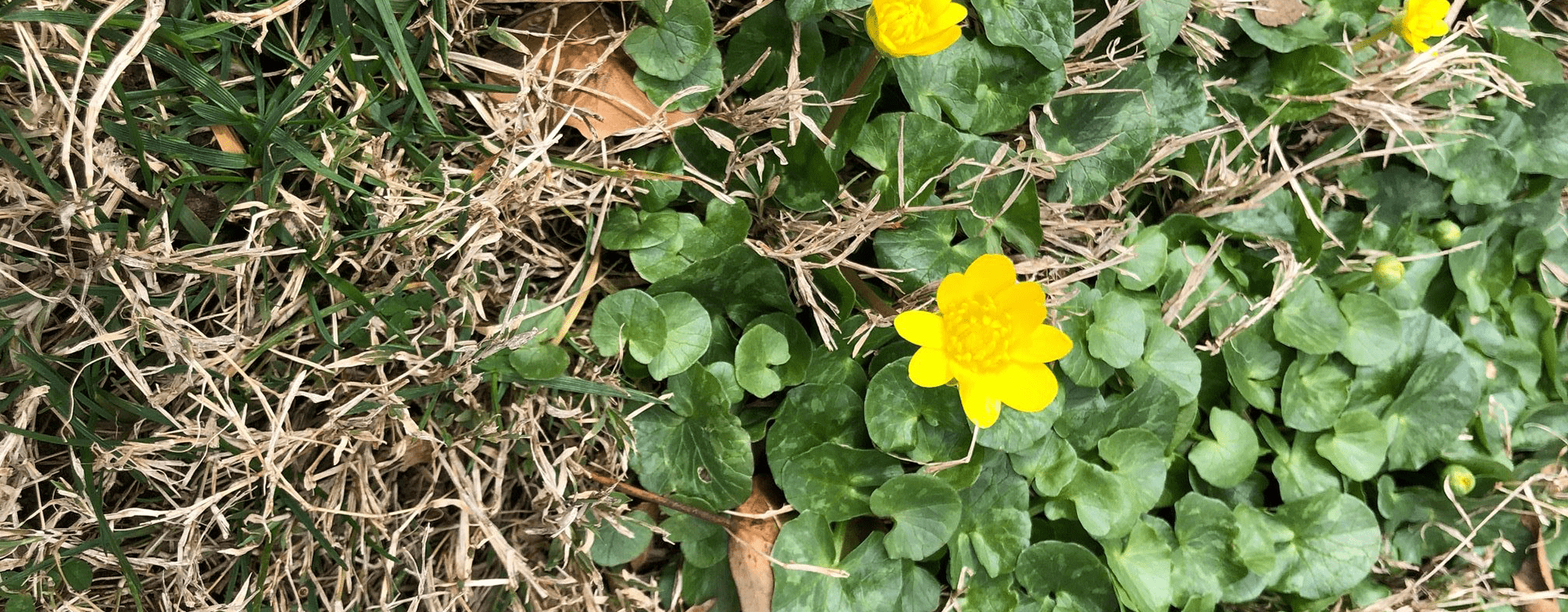
Lesser Celandine….Smotherer of Native Plants
Lesser celandine (Ficaria verna) is a broadleaf plant with a yellow flower, which is native to Europe and Western Asia. In North America it is considered to be a highly invasive plant. You can find it growing in 21 of the lower 48 states, and in southern parts of Canada.
Lesser celandine produces both seeds and bulbils. This type of reproduction strategy causes it to be highly invasive, and allows it to spread like wildfire. The three easiest and fastest ways it spreads are water ways, boots of hikers, and hooves of ungulates. The spread of lesser celandine begins to create dense green carpets in our woods and lawns. Studies have shown that these “carpets” inhibit native wildflowers and other plants from finishing their life cycles. When these native wildflowers and plants cannot finish their life cycles, pollinators are losing their sources of nectar and mammals are losing food sources. Can the mammals just eat the celandine instead? Unfortunately no, because lesser celandine has compounds that make it taste bitter and possibly toxic to mammals. These are just a few out of many ecological impacts that are the driving forces to research ways to eradicate lesser celandine from our woods and lawns.
We are starting a research project in early 2020 to test eradication methods of lesser celandine. We will be testing the effects of hand removal, and two types of herbicides: glyphosate and metsulfuron. We will measure cover of celandine and count other species pre and post treatment. This study will likely be a multiple year study because other data shows lesser celandine needs multiple rounds of treatments to eliminate it.
Below are photos of lesser celandine before and after it flowers, and the dense carpet it creates.
–Chad G.

